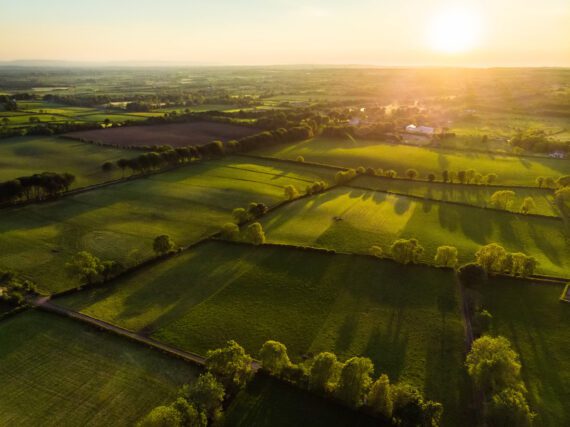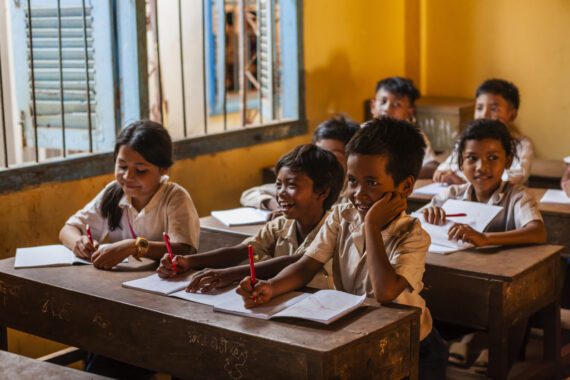This story is featured in the 2020 Hunger Report: Better Nutrition, Better Tomorrow
School meal programs are a vital safety net for children and their families around the world. In few places is this more apparent than in Turkana County in arid northwest Kenya.
The poverty rate in Turkana is 80 percent, the highest in the country, according to the Kenya National Bureau of Statistics. Nearly a million people live in the county, spread over an area slightly larger than West Virginia. The harsh environment makes it hard to farm. Long dry spells are a way of life. Climate change is increasing the intensity of droughts, shortening rainy seasons and reducing food supplies. Some of the children receiving a hot lunch through the school meal program have nothing to eat when they return home.
Turkana is a pastoralist society. Like their ancestors since time immemorial, most of the population lives as nomadic herders of goats, sheep, and camels. To find water for the animals, families are regularly on the move, walking long distances from one location to another. The mobility of the families makes it difficult for children to be in school. School meal programs have given parents an incentive to send their children to school and keep them there.
“The families here are attracted to school by the food,” explains the headmaster of a primary school visited by Bread for the World Institute. “Without the lunch, most of these kids would not be here.”
At lunch time, we follow the children as they run with their bowls to the kitchen, where the school’s chef, a community member, ladles a porridge made of sorghum and cowpeas, drought-tolerant crops high in nutritional value and locally grown.
The United States of Department of Agriculture (USDA) provides support to the World Food Program (WFP) to purchase food from local farmers to supply schools in this and other localities. WFP has been working with the Kenyan Ministry of Education since 1980 to implement school meal programs in Turkana and other high-poverty areas of the country. USDA supports school feeding in Kenya through the McGovern-Dole Food for Education Program established in 2004. The program provides training to chefs and school administrators in personal hygiene and how to preserve nutrients while cooking.
Areas with high poverty rates, such as Turkana, have low school enrollment and, typically, high gender disparities. School meals have been shown to increase enrollment of girls and reduce dropout rates. Educated women give birth to healthier babies who have lower risk of stunting and wasting. To end intergenerational cycles of poverty and hunger, it is hard to think of many better investments than school meal programs.
In 2018, the Government of Kenya formally took over responsibility for the school meal program in Turkana and other arid and semi-arid areas of the country, providing hot lunches to 1.6 million school children in all. WFP and USDA continue to support the government to ensure a smooth transition. It’s a journey to self-reliance facilitated by steadfast partners.
To end intergenerational cycles of poverty, it is hard to think of many better investments than school meal programs



